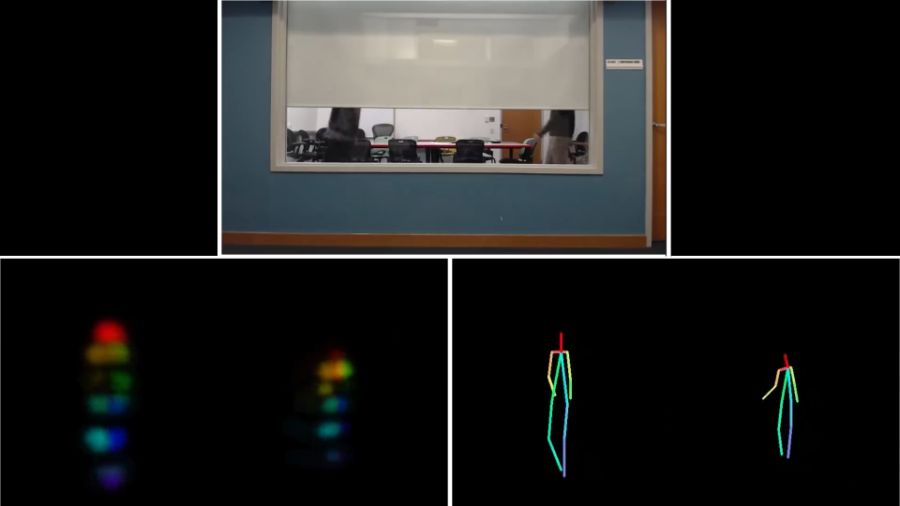From Wearables to "Invisibles": We’re Collaborating to Study Itch in Sleeping Children

Using artificial intelligence (AI) and wireless technology, we’re making it easier to participate in clinical trials from home.
Atopic dermatitis (AD), also known as eczema, is a chronic itch that affects between 5% and 20% of children worldwide.1 Trying to understand how this condition impacts sleep can be challenging, especially when patients are too young to properly describe their experiences. Questionnaires about frequency and severity of itch often fall short of capturing the patient experience in a consistent, measurable way. What's more, wearable devices can irritate the skin further, which makes it difficult for people with AD to participate in clinical trials.
So, we’re investigating a third route: collaborating with Emerald Innovations to use "invisibles": a new generation of wireless devices that can detect mobility, breathing, and sleep behavior remotely. By pairing wireless technology and machine learning, we hope to now monitor children with AD at home, without having to attach a device, record a video, or rely on patients (or their caregivers) to recall details of their symptoms.

Sanofi scientist Raolat Abdulai and Emerald Innovations CEO Dina Katabi explain how "invisibles" can make sleep studies more inclusive and accurate.
“We chose to work with this technology because of its potential to help us improve our understanding of a child’s experience with atopic dermatitis,” said Sanofi scientist Raolat Abdulai. “It can also help us decentralize clinical trials, because patients can take part in research from the comfort of their own homes. Furthermore, we expect this technology can help avoid the pitfalls of some wearables, which can measure activity inaccurately in children and people with darker skin tones."2,3
A new way to study scratching
To understand the full impact of AD on daily life, including sleep, researchers measure scratching–our normal response to itch. Severe forms of AD can be extremely disabling, causing patients to suffer sleep loss, psychological and social problems, and impair quality of life.
Through the Sanofi iDEA Awards initiative, our clinical and medical researchers have joined forces with digital health company Emerald Innovations to study pediatric AD patients remotely.
How "invisibles" work
Rather than relying on wearables, Emerald's device is designed to use home wireless technology and machine learning to study movement and measure vital signs. Much like radio waves, wireless signals are reflected off people in a room. Emerald's wireless and touchless sensors use sophisticated algorithms to process these reflections, allowing our scientists to detect and analyze a specific person's vital signs and movement.

Top: People walking in a room. Bottom left and right: Wireless signals bounce of the people walking, and those signals are interpreted using machine learning. Movements and vital signs like breathing and heart rate can be measured and analyzed using this technology
"As an engineer working with wireless technology, you try to cancel out radio reflections from the environment because they can interfere with wireless communication," explained Dina Katabi, Thuan and Nicole Pham Professor at MIT and CEO of Emerald Innovations.
But reflections can be very useful for studying health. Katabi explained that instead of cancelling them out to make communication better, the new platform amplifies them to create a digital picture of the environment. That generates a massive amount of data, so a type of machine learning called "deep learning" is used to extract information about breathing, heartbeat, movements, vital signs, sleep, and how people interact with each other.
“This technology can give researchers a window directly into a patient's health and quality of life–without asking them to master technology or wear devices. This could radically change the way we study diseases, and how we care for patients of all ages," said Katabi.
Making clinical trials more inclusive
The platform developed by Katabi and her team is small enough to mount discreetly on the wall, and powerful enough to measure small changes in a person's pulse. That means our researchers can monitor a patient's scratching, sleep, and vital signs in a natural setting, over long periods of time. It also gives us a new, more efficient way to gather information without relying on parents to remember exactly when their child fell asleep, or how many times they woke to scratch in the night.
The platform developed by Katabi and her team includes a device small enough to mount discreetly on the wall (shown here, right), and software that is powerful enough to measure small changes in a person's pulse
“Collaborations like this allow us to build relationships with people who have deep expertise in key areas, and address R&D challenges in new ways through cutting-edge science and technology," said Karen Chandross, Senior Director of R&D Strategic Initiatives and Science Relations at Sanofi and Head of the iDEA program. "This study will help us gain a clearer picture of how children experience AD and how it affects their sleep, so we can better understand their needs. It will also help us define the relationship between itching and scratching, and to develop a more inclusive way to study AD in people of all ages, from all walks of life."
Explore more

Taking Down Type 2 Inflammatory Disease

Improving Quality of Care in Atopic Dermatitis

The Type 2 Inflammation Connection
References
- Bylund S, et al (2020) Acta Derm Venereol 100:adv00160; DOI: 10.2340/00015555-3510
- Bent, B., Goldstein, B.A., Kibbe, W.A. et al. (2020) Digital Medicine 3:18; doi: 10.1038/s41746-020-0226-6
- Colvonen PJ, et al. (2020) Sleep 43:zsaa159; DOI: 10.1093/sleep/zsaa159